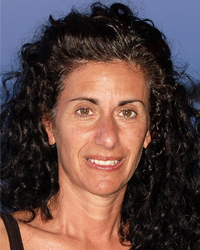This article is based on a December 2024 issue brief by West Health and Aurrera Health Group, which partnered to identify state policy levers and strategies to increase access to and participation in Medicare Savings Programs. Read the full brief here.
Healthcare affordability is out of reach for many in the United States, including older adults—many of whom have limited financial resources. While Medicare provides health insurance coverage to 68 million older adults and younger people with long-term disabilities, the out-of-pocket costs for care can be a serious burden for low-income beneficiaries. To help alleviate some of this financial burden, in 1988, Medicare Savings Programs (MSPs) were enacted through the Medicare Catastrophic Coverage Act.
What Are MSPs?
MSPs improve the affordability of Medicare for eligible older adults by lowering out-of-pocket costs, including premium and cost-sharing costs, associated with the Medicare program. The programs are administered by state Medicaid Agencies as part of a state-federal partnership and individuals qualify for the program based on yearly earned income and total financial assets. While the federal government sets minimum income and asset eligibility levels for MSPs, states can adopt more generous requirements.
There are more than 10 million individuals currently enrolled in MSPs nationwide, through several types of programs:
- Qualified Medicare Beneficiary (QMB)
- Specified Low-Income Medicare Beneficiary (SLMB)
- Qualifying Individual (QI)
- Qualified Disabled Working Individual (QDWI)
The chart below (see page 6 in the linked brief) provides detailed information on each type of MSP program, including eligibility requirements and enrollment data.

Sources: “Medicare Savings Programs,” “Federal Rule on Medicare Savings Programs Will Cut Red Tape for Older Adults and People With Disabilities,” “Medicare Savings Programs: New Estimates Continue to Show Many Eligible Individuals Not Enrolled,” “Chapter 3: Medicare Savings Programs: Enrollment Trends,” “MMCO Statistical & Analytical Reports.”
Notes:
* For services and items Medicare covers.
+ The Qualified Disabled & Working Individual (QDWI) Program is another common MSP type that provides assistance to individuals who have lost premium-free Part A coverage because they returned to work. QDWI is not included in the table or a focus of this article, given the limited number of eligible individuals.
Federal and State Efforts to Expand Access to MSPs
In an effort to address access and participation challenges, in 2023, the Centers for Medicare & Medicaid Services (CMS) issued a final rule to streamline enrollment processes and facilitate greater participation rates among those who are eligible for MSPs. Rule requirements include automated enrollment of individuals who receive Supplemental Security Income (SSI) into the QMB program and the use of Low-Income Subsidy (LIS) program data from Medicare Part D for enrollment into MSPs.
Along with important efforts on the federal level, given their flexibility in setting more generous income and asset limits than federal ones, states play a critical role in improving access to MSPs. West Health and Aurrera Health Group identified several strategies states may employ to increase access to and participation in MSPs. These include:
- Increasing Financial Eligibility: Expanding financial eligibility criteria for MSPs can be done by increasing or eliminating asset limits and raising income eligibility limits. This is achieved at the state level through legislation, state budgetary actions, and/or State Plan Amendments (SPA).
- Prioritizing income eligibility expansion to grow enrollment quickly: Focusing on expanding income eligibility was found to be more effective in quickly expanding access and increasing enrollment than raising or eliminating asset limits. For example, almost immediately after raising income eligibility limits in January 2023, New York expanded MSP eligibility to roughly 300,000 individuals.
- Aligning Eligibility to Ensure Robust coverage: Aligning MSP eligibility with other programs that serve low-income adults, such as the Medicare Part D low-income subsidy (LIS) or Aged, Blind, and Disabled (ABD) Medicaid, can support expanded access to more robust benefits, especially through automated enrollment of individuals who qualify for multiple programs.
Focusing on expanding income eligibility was found to be effective in quickly expanding a access and increasing enrollment.
- Identifying Opportunities to Offset Costs and Leverage Financial Resources: Costs associated with increased eligibility and enrollment into MSPs can be a concern for states. Careful budgetary analysis may identify cost savings opportunities through other pathways, especially in cases where MSP eligibility expansion may result in savings to other state programs. For example, if a state expands QMB eligibility it may proportionally increase eligibility for other MSPs, including the QI program for which states receive a 100% federal match, up to a predetermined funding allotment, at no additional cost.
- Ensuring Medicaid Policies Complement MSPs: As a result of “lesser of policies,” states may not pay full Medicare cost sharing if Medicare payment exceeds the states’ Medicaid rate for the same service. This can have unintended consequences that conflict with MSPs’ intent to improve care access. Thus, states should ensure that their Medicaid policies complement MSPs.
In addition to these examples, bolder solutions to improve access to MSPs may also be enacted on state and federal levels. These include collapsing or combining different MSPs or creating a new federal program to replace LIS and MSPs. Regardless of the chosen strategy, finding ways to improve access to MSPs will require further consideration and analysis.
Final Thoughts
As people across the age span continue to grapple with high and rising healthcare costs, it will be critical for policy solutions to include older adults. While Medicare is essential for providing healthcare coverage to this population, more work can be done to improve access to affordable care for low-income older adults.
To learn more about any of the strategies described in this article, view this helpful resource and article.
Elvira Makk Frid, MPP, is a research associate, Amy Herr, MHS, PMP, is director of Health Policy and Caroline Picher, MPH, is associate director, Health Policy at the nonprofit, nonpartisan West Health Policy Center in Washington, DC.
Photo credit: Shutterstock/Julia Zavalishina









